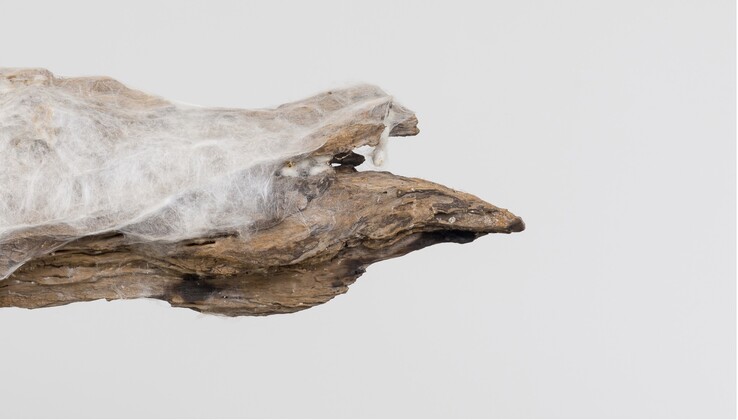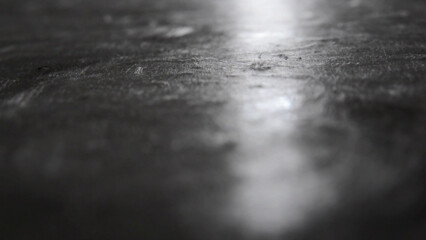Group Exhibition NTU Centre for Contemporary Art, Singapore
Exhibition: 21 July 2018 - 30 September 2018
Opening Reception: Friday, 20 July 2018, 7.00-9.00pm
Guest-of-Honour: Chang Hwee Nee, Chief Executive Officer, National Heritage Board, Singapore
Panel Discussion: Sericultural Practices with artists Liang Shaoji and Vivian Xu
8 Sep 2018, Sat 02:00 PM - 03:30 PM
The Single Screen, Block 43 Malan Road
Chaired by Lisa Onaga (Japan/Singapore), Assistant Professor, NTU
NTU Centre for Contemporary Art Singapore is embarking on an inquiry into natural materials, exploring the knowledge they embody as biological forms as well as within social, geopolitical, and historical contexts. Trees of Life – Knowledge in Material is part of the Centre’s long-term research cluster CLIMATES. HABITATS. ENVIRONMENTS.
This exhibition focuses on materials from four plants deeply rooted in Asia: indigo (Indigofera tinctoria), lacquer (Rhus succedanea and Melanorrhoea usitata), rattan (Calamoideae), and mulberry (Morus). The works trace the ongoing involvement with these plants in the artistic practices of Manish Nai (India) with indigo, Phi Phi Oanh (United States/Vietnam) with lacquer, Sopheap Pich (Cambodia) with rattan, and Liang Shaoji (China) and Vivian Xu (China) with mulberry silk. While the featured installations serve as a starting point to uncover the materiality of the chosen plants, the study of their natural and cultural DNA allows further exploration into their biological processes and diverse usages at their locale.
The artworks intertwine with selected research documents that address the complex histories and circulation, as well as the effects of human intervention on these natural resources. Starting from the properties and characteristics of the materials themselves, the project expands into their cultural representation and significance for communities and their crafts.
The longstanding social and cultural practices associated with indigo, lacquer, rattan, and mulberry silk have accumulated a vast repository of knowledge, whether formal or tacit. Beyond the format of the exhibition, topical days with talks and seminars will be dedicated to each of the four materials, further investigating their social applications over centuries in terms of their materiality, cultural references, or expanded ecology, and as arising from technological advancements. The lectures, panels, talks, and workshops will feature the participating artists, as well as craftsmen, scientists, ethnobotanists, anthropologists, scholars, non-governmental organisations, and designers who are working with these materials and researching innovative applications. From the diverse perspectives offered by the contributors, the public programme excavates layers of meanings and reiterates the deeper role art and craft traditions have in supporting local communities, their ecosystems, and in affecting the larger geopolitical order.
Topical talks and panel discussions will take place on 21 July–Lacquer; 25 August–Rattan; 1 September–Indigo; and 8 September–Mulberry. For more information on these events and other public programmes relating to the exhibition, please refer to our events page: http://ntu.ccasingapore.org/events/
BIOGRAPHIES
Manish Nai (b. 1980, India) concentrates on the material qualities of the various substances he utilises in his work. His interest is in the discovery of abstract forms through the physical manipulation of matter, and the new life assumed by cast-offs when transformed from objects of use to objects of art. Using the colour indigo (indigo dye), itself loaded with a multitude of representations and associations, this opens up the visual form to subjectivities in the interpretation of the medium throughout time. Nai’s work was included in A beast, a god, and a line, curated by Cosmin Costinas, which debuted during the Dhaka Art Summit 2018 and subsequently travelled to Para Site, Hong Kong (2018). In 2017, the Fondation Fernet Branca in St. Louis, France, presented a comprehensive exhibition of the artist’s paintings, murals, sculptures, and photographs. The exhibition will travel to the Het Noordbrabants Museum in The Netherlands. Other group exhibitions include Asymmetrical Objects, Dr Bhau Daji Lad Museum, Mumbai (2018); the Kochi-Muziris Biennale (2014); and the Shanghai Biennale (2012). He has newly completed an 18-metre-long sculpture as a permanent installation in Mumbai’s Bandra-Kurla Complex. His works are on view at the Sculpture Park at Madhavendra Palace, Rajasthan, India (2017–18), and at the Smart Museum of Art in Chicago as part of its permanent collection.
Phi Phi Oanh’s (b. 1979, United States/Vietnam) work is informed by her inquiry into lacquer as a material combined with her studies of the Vietnamese lacquer painting (sơn mài) tradition. Drawing from the hybrid nature of her personal history, Oanh constructs pictorial and evocative installations that reconfigure culturally-specific signs and symbols, creating familiar yet distinctive experiential spaces. In 2004 she was awarded a Fulbright Scholarship to study traditional Tranh Sơn Mài (Vietnamese lacquer painting) in Hanoi, which has since become a key medium in her practice. She has had solo exhibitions at L’Espace, Alliance Française in Hanoi; Artcore in Los Angeles; Art League in Houston; as well as El Palacio Nacional de la Cultura in Managua. In 2016, she was commissioned to create Pro Se, a work for the National Gallery Singapore and also showed her monumental Specula in the Singapore Biennale (2013).
Sopheap Pich (b. 1971, Cambodia) left Cambodia with his family as a refugee at the end of the Khmer Rouge’s reign, settling in the United States in 1984. Memories of his childhood and a desire to reconnect with his home country drew the artist back to Cambodia in 2002. He began working with local materials—bamboo, rattan, burlap from rice bags, beeswax, and earth pigments gathered from around Cambodia—to make sculptures inspired by bodily organs, vegetal forms, and abstract geometric structures. The strength, durability, lightness, and incredible malleability of rattan allow Pich to create organic forms that have become a signature of his practice. Pich holds a BFA from the University of Massachusetts at Amherst (1995), and an MFA from the School of the Art Institute of Chicago (1999). In 2013, Pich presented a solo exhibition at the Metropolitan Museum of Art, New York, entitled Cambodian Rattan: The Sculptures of Sopheap Pich. Selected group exhibitions include the 57th Venice Biennale (2017); the Moscow Biennale (2013); Documenta 13, Kassel (2012); the Singapore Biennial (2011), among others. His work was presented at NTU CCA Singapore as part of Guggenheim UBS MAP Global Art Initiative’s No Country: Contemporary Art for South and Southeast Asia (2014), curated by Dr June Yap.
Liang Shaoji’s (b. 1945, China) practice intersects science and nature, biology and bio-ecology, weaving and sculpture, and installation and performance. He has been working with silkworms for almost three decades, using the life process of these insects as a medium. Liang graduated from the Zhejiang Academy of Fine Arts (now renamed China Academy of Fine Arts, Hangzhou) in 1965 and studied at the university’s Varbanov Institute of Tapestry. Now working in Tiantai, Zhejiang Province, his works are filled with a sense of meditation, philosophy, and poetry, while illustrating the inherent beauty of silk. Selected exhibitions include Cloud Above Cloud, Museum of China Academy of Art, Hangzhou (2016); What About the Art?, Contemporary Art from China, Al Riwaq, Doha (2016); Liang Shaoji: Back to Origin, ShanghART Gallery, Shanghai (2014); Art of Change, Hayward Gallery, London (2012); Liang Shaoji, Prince Claus Fund, Amsterdam (2009); among others. He was awarded the Prince Claus Award in 2009 and the Chinese Contemporary Art Award (CCAA) in 2002. In September 2018, Liang will have a solo exhibition at M Woods, Beijing.
Vivian Xu’s (b. 1985, China) practice focuses on the exploration and intersection of electronic and bio media. While creating new forms of machine logic, life, and sensory systems, Xu explores the possibilities of designing a series of hybrid bio-machines that are capable of generating self-organised silk structures that combine the silkworms’ natural production process with automated computational systems of production. She is the co-founder of Dogma Labs, a cross-disciplinary laboratory based in Shanghai, dedicated to integrating design, research, education, and production with the areas of computation, biology, and digital fabrication. Xu holds an MFA in Design and Technology from Parsons the New School for Design, New York (2013) and is currently a Global Pre-Doctoral Fellow at New York University Shanghai. Xu has exhibited and lectured at various institutions around the world, including the National Art Museum of China, Beijing; Central Academy of China, Beijing; Chronus Art Center, Shanghai; Rockbund Art Museum, Shanghai; Art Laboratory Berlin; SymbioticA, the University of Western Australia; and China Academy of Art, Hangzhou.
The project Trees of Life – Knowledge in Material is led by Ute Meta Bauer, Founding Director, NTU CCA Singapore and Professor, NTU School of Art, Design and Media (ADM); Laura Miotto, Associate Professor and Co-director, MA Museum Studies and Curatorial Practices, NTU ADM; and Khim Ong, Deputy Director, Curatorial Programmes, NTU CCA Singapore.
More Pictures:










